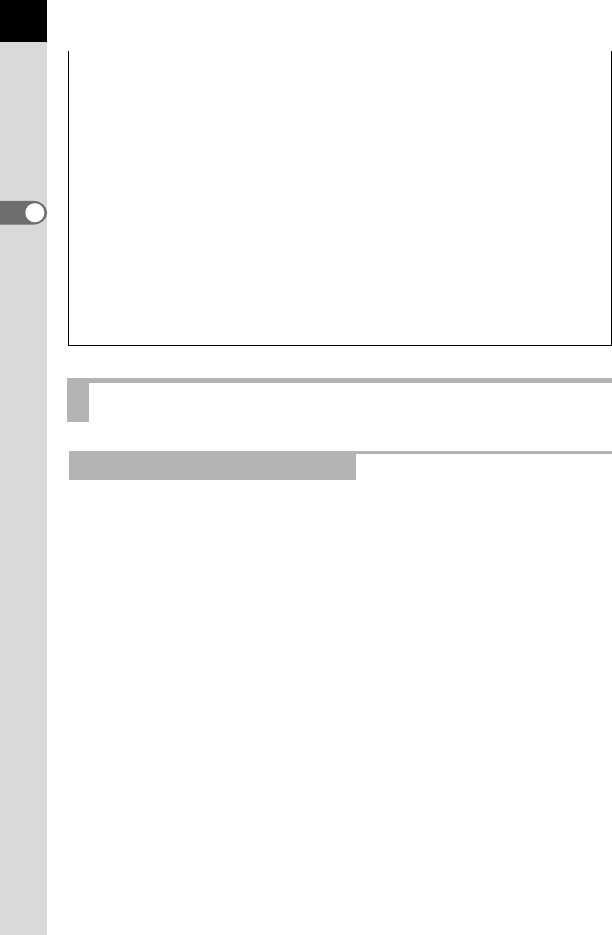
44
Getting Started
2
Choose the number of pixels (size) and quality level (JPEG data
compression rate) of pictures according to how you intend to use the
pictures you have taken.
Pictures with larger recorded pixels or more Es are clearer when printed.
The number of pictures that can be taken (the number of pictures that can
be recorded on an SD Memory Card) decreases with larger file sizes.
The quality of the captured photo or printed picture depends on the quality
level, exposure control, resolution of the printer and a variety of other
factors so you do not need to select more than the required number of
pixels. For example, to print in postcard size, i (1824×1216) is
adequate. Set the appropriate recorded size and quality level depending
on how the picture will be used.
Choose the appropriate number of recorded pixels and quality level for
JPEG images on the control panel.
1 Setting the JPEG Recorded Pixels (p.150)
1 Setting the JPEG Quality Level (p.151)
• Avoid using or storing the card in direct sunlight or where it may be exposed to
rapid changes in temperature or to condensation.
• For information on compatible SD Memory Cards, visit the PENTAX website.
• Format new SD Memory Cards. Also format SD Memory Cards used with other
cameras.
1 Formatting the SD Memory Card (p.214)
• Please note that formatting the SD Memory Card will not necessarily delete the
data so that it cannot be recovered using off the shelf data recovery software.
If you are going to discard, give away or sell your SD Memory Card you should
ensure that the data on the card is completely deleted or the card itself is
destroyed if it contains any personal or sensitive information. There are off the
shelf secure data deletion software programs available that will completely
delete the data.
In any case the data on your SD Memory Card should be managed at your own
risk.
Recorded Pixels and Quality Level
When the File Format is JPEG


















